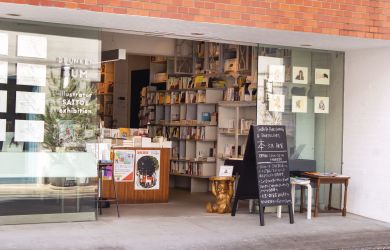
May 22, 2020
Designing Social Change
NOSIGNER responds to COVID-19 through art and innovation
Japan-based design organization NOSIGNER‘s newly launched platform PANDAID, which aims to keep people informed during the COVID-19 pandemic, is a testament to the company’s vision of driving social change through art and innovation.

NOSIGNER’s philosophy of creating change through design is embodied in all of its work, including its 2011 “OLIVE” project. In response to the 2011 Tohoku earthquake and tsunami, the company developed a wiki site that aimed to gather and share practical information about the disaster. Incredibly, the website was created just 40 hours after the earthquake and was shared across various media channels, including those of the Ministry of Health and Welfare. What started as an initiative to provide information on the earthquake and evacuation shelters, then transformed into the “TOKYO BOUSAI” book project and was distributed to all Tokyo households.
Now, in 2020, the head of NOSIGNER Eisuke Tachikawa has created “PANDAID,” a website for the prevention of new coronavirus infections. What sets this website apart from many other online coronavirus pages is its democratic co-editing feature. Anyone with any type of information related to the pandemic can participate in this project.
Tachikawa is positive about the impact of PANDAID. He highlights that “the difference between this time and that time is that in the [2011] disaster, the project started with so many lives already lost, but this time, the number of people who can be saved may change if reliable information and designs for solutions are disseminated.”
Preventative art
In response to the coronavirus, Tachikawa started PANDAID with the goal to “publish the world’s most comprehensive website on new COVID-19 infections in multiple languages.” The website currently operates in Japanese, English, Taiwanese, Chinese, French and Spanish. However, as it rapidly expands its reach, the team is hoping to include Italian, German, Korean and Portuguese as well.
The PANDAID website is easy to follow with information ranging from at-home meal preps to medical knowledge and financial aid information. Of course, we also have to credit the NOSIGNER team for creating such innovative and captivating visual aids. Their social distancing posters that compare two meters to recognizable objects help both adults and children contextualize their space. PANDAID has also made these posters downloadable and accessible for anyone at home.
So far, the project has been extremely successful with over “200 editors, designers, doctors and disinfection companies involved.” The 30-second “DIY clear folder face shield” video has honed in over one million views across various social media channels. The website and its resources are also being used in many medical institutions within Japan, proving its strong validity.
The NOSIGNER philosophy
Tachikawa and his team strongly believe that “the power of design and creativity lies not only in its form, but also in the invisible relationships that emerge from it.” Elaborating, Tachikawa explains that “all the artifacts in the world should be renewable by ideas and creativity into something that produces much better relationships than they do now.” In other words, design can be a gateway for those who want to explore different possibilities and create social change — to evolve by creating.
The company also practices its philosophy by educating companies and students. In order to advocate the importance of creative education, Tachikawa himself teaches people about “the similarities between biological evolution and innovation” through a method he calls “evolution thinking.”
[rl_gallery id=”189847″]
Designing social change
For a lot of people, the link between design and social change may be obscure. However, Tachikawa explicitly states that design is in fact essential for social change as it helps “visualize the future that has yet to be seen.”
“Design is the starting point of the transformation of dreams into reality. In the visual sense, design has the same meaning as vision. Then it is the realization of the vision. It is also the power of design to bring imagination to reality. The design and execution, the details, are very important to complete. For this reason, it is essential to think about the construction method and details.”
Social change doesn’t happen in a single project, but in a chain reaction. — Eisuke Tachikawa
Although design is often realized by skilled craftsmen, Tachikawa reminds us that social change cannot be accomplished independently. “Society does not change by one person alone. That is why I believe society can only move when it works as a collective in a diverse community with a shared purpose.”
He shares an example of a collective effort with NOSIGNER’s branding project of the Yokohama DeNA BayStars. Although the project was a commitment to the baseball team’s branding, the company strived to emphasize how the team would come to brand the city itself. This resulted in “a chain of events, including workshops with the Yokohama city government to think about the future of Yokohama in 2059, a civic pride project called “WE BRAND YOKOHAMA” and a branding project called “YOXO,” an innovation policy for the entire city of Yokohama.” This goes to show how “social change doesn’t happen in a single project, but in a chain reaction.”
View this post on Instagram
Support PANDAID
As Tachikawa affirms, “we’re still at the stage where we can’t let our guard down, so we’ll continue to grow PANDAID.” He makes a good point; although Japan’s situation is slowly looking up, we can never be sure of anything in this current state of global uncertainty.
Visit and share the PANDAID website, pandaid.jp.
If you are interested in becoming a co-editor or have information to share, please fill out this online form (currently only in Japanese).







